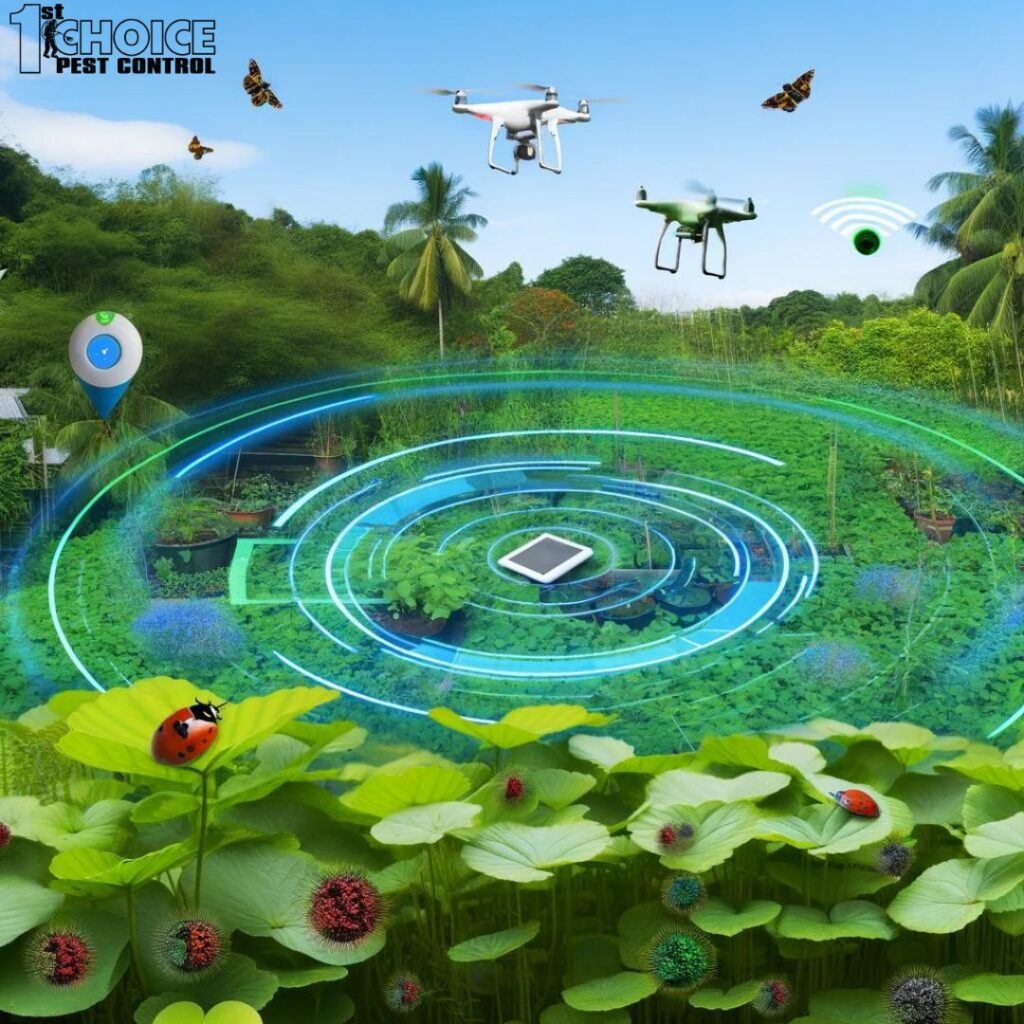Biological Control Techniques
Biological control techniques are a critical component of eco-friendly pest management, offering a sustainable alternative to chemical pesticides. This approach involves the use of living organisms, such as predators, parasites, and pathogens, to control pest populations. By harnessing the natural enemies of pests, biological control aims to reduce the reliance on chemical treatments, thereby minimizing the environmental footprint of pest management practices.
The principle behind biological control is simple yet profound: it leverages the existing relationships within ecosystems to manage pest populations naturally. For example, ladybugs (Coccinellidae) are well-known predators of aphids, a common pest on various crops. Introducing ladybugs into an affected area can significantly reduce aphid populations without the need for chemical insecticides. Similarly, the use of Bacillus thuringiensis (Bt), a naturally occurring bacterium, has proven effective against a variety of insect larvae, acting as a biological insecticide that is safe for humans and non-target species.
One of the key advantages of biological control is its sustainability. Unlike chemical pesticides, which can lead to resistance over time, biological control agents are part of a self-regulating ecosystem. When the pest population decreases, the population of the control agent also reduces, minimizing the risk of unintended environmental impacts. Additionally, biological control methods do not leave harmful residues, making them safer for the environment, as well as for farmers and consumers.
Successful implementation of biological control techniques requires a thorough understanding of the target pest, its natural enemies, and the ecosystem in which they interact. This often involves research and monitoring to identify the most effective control agents and determine the best methods and timings for their release. For instance, the release of parasitic wasps can be timed to coincide with the life cycle of pest insects, maximizing the impact of the control effort.
Recent advancements in biological control include the development of genetically engineered microorganisms designed to target specific pests while being harmless to other species. These innovations represent a promising frontier in pest management, offering highly targeted and environmentally friendly solutions to challenging pest problems.
Despite the potential challenges, such as the need for careful planning and the possibility of unintended ecological impacts, the benefits of biological control techniques are undeniable. They provide a powerful tool for reducing pest populations in an environmentally sustainable way, contributing to the overall health of ecosystems and reducing our reliance on chemical interventions. As we look towards 2024 and beyond, the continued evolution and adoption of biological control methods stand out as a key strategy in the quest for eco-friendly pest management solutions.
Development and Use of Eco-Friendly Pesticides
The quest for eco-friendly pest control solutions has led to significant advancements in the development and use of pesticides that are safer for the environment, humans, and non-target species. Modern science has paved the way for the creation of botanical and microbial pesticides, which offer effective pest management solutions with a reduced ecological footprint. These innovations represent a departure from traditional chemical pesticides, focusing on substances with natural origins that degrade quickly and have minimal residual impact.
Botanical pesticides, derived from plants known for their insecticidal properties, such as neem, pyrethrum, and garlic, provide a natural way to combat pests. These substances work by targeting specific aspects of pest physiology without the broad-spectrum impact of conventional chemicals, minimizing harm to beneficial insects and reducing the risk of resistance development. Microbial pesticides, on the other hand, utilize bacteria, fungi, or viruses that infect and kill pests. An example is Bacillus thuringiensis (Bt), which produces toxins lethal to certain insects when ingested but is harmless to humans and most non-target organisms.
The development of these eco-friendly pesticides involves rigorous testing to ensure their effectiveness and safety. This process includes evaluating their impact on target pests, non-target species, and the environment, ensuring that they offer a real benefit over traditional chemical options. Regulatory bodies play a crucial role in this process, setting stringent standards for approval and use.
Precision Pest Management Through Technology
The integration of technology into pest management practices offers new avenues for precision, efficiency, and environmental stewardship. Innovations such as drones, artificial intelligence (AI), and the Internet of Things (IoT) are revolutionizing how pests are monitored and managed. Drones, for instance, can survey large areas of land quickly, identifying pest hotspots and allowing for targeted treatment applications. AI and machine learning algorithms can predict pest outbreaks by analyzing data from various sources, enabling preemptive action before pests become a significant problem.
The use of technology not only enhances the effectiveness of pest management strategies but also reduces the need for broad-spectrum pesticide applications. By pinpointing exactly where and when treatments are needed, these technologies minimize the amount of chemicals released into the environment, supporting sustainability goals.
Cultural Practices for Pest Prevention
Cultural practices play a vital role in preventing pest infestations before they start. These methods involve modifying the environment or the way crops are grown to make conditions less favorable for pests. Techniques such as crop rotation, companion planting, and proper sanitation can significantly reduce pest populations by disrupting their life cycles and removing food sources and breeding grounds.
Educating farmers and homeowners on these practices is crucial for their widespread adoption. Simple changes, such as rotating crops to avoid depleting soil nutrients and discourage pest proliferation, can have a significant impact on pest management efforts.
Community Engagement and Education
Community involvement and education are fundamental to the success of eco-friendly pest control strategies. By raising awareness of sustainable practices and the importance of reducing chemical pesticide use, communities can collectively contribute to environmental protection and healthier ecosystems. Programs that engage schools, community groups, and local businesses in pest management education can foster a collective approach to pest control, emphasizing prevention and natural remedies.
Looking Ahead: The Future of Eco-Friendly Pest Control
As we look to the future, the potential for new discoveries and innovations in eco-friendly pest control is vast. Ongoing research into alternative pesticides, biological control agents, and technological advancements promises to deliver even more effective and sustainable solutions. The role of policy and regulation will also be crucial in supporting these advancements, ensuring that new methods meet safety and environmental standards.
Conclusion
The shift towards eco-friendly pest management is more than a trend; it’s a necessary evolution in our approach to pest control. By integrating IPM approaches, leveraging biological control techniques, developing safer pesticides, utilizing cutting-edge technology, and adopting cultural practices, we can significantly reduce our environmental footprint. Community engagement and education will further support these efforts, ensuring that eco-friendly pest control methods are widely adopted and effectively implemented. As we move forward, the commitment to sustainability in pest management will not only benefit our environment but also ensure the health and safety of future generations.



 Service Request
Service Request